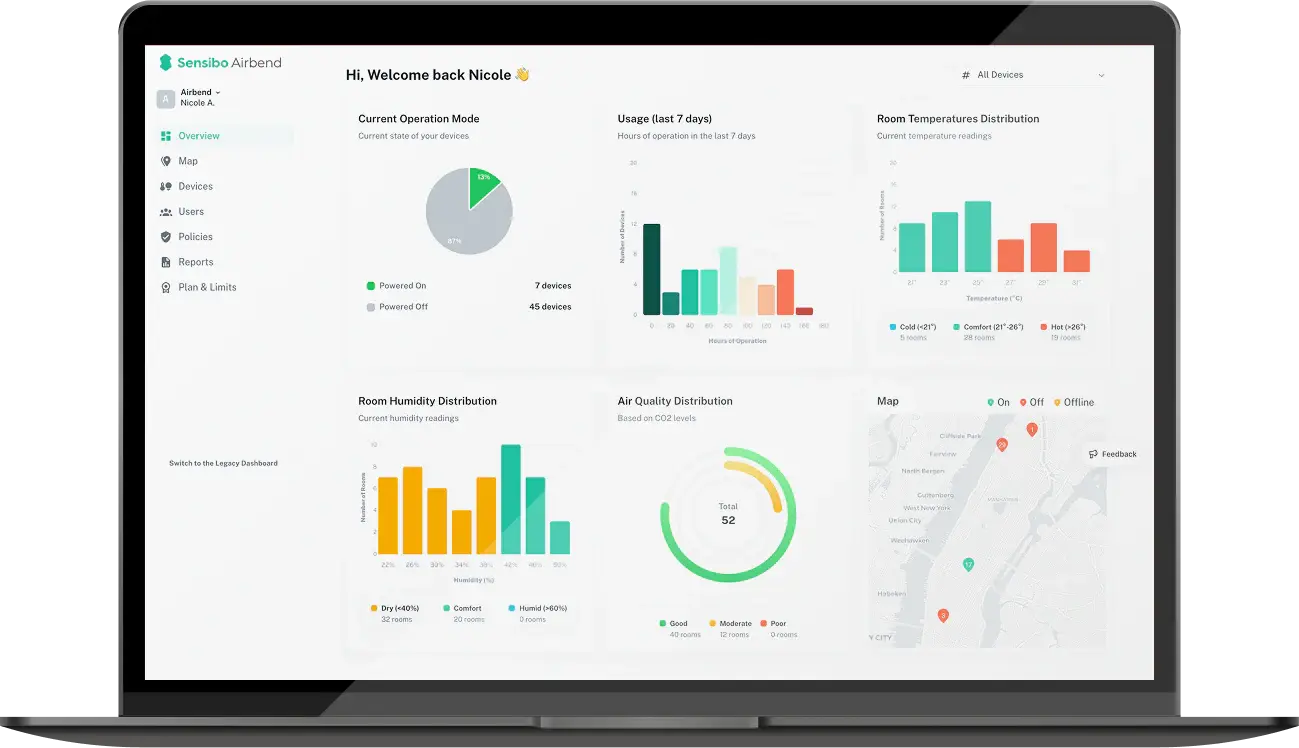Top 7 Mistakes People Make During a Heatwave and How to Avoid Them
Last Tuesday, my neighbor Sarah cranked open every window in her Phoenix home at 2 PM. "Fresh air will help," she reasoned. Her electric bill told a different story—it doubled. Heatwave mistakes like this plague homeowners everywhere, turning good intentions into expensive disasters. Here are seven sneaky errors that sabotage your summer cooling efforts.
Mistake #1: Timing Window Operations Wrong
Opening windows feels natural when you're sweltering. Makes sense, right? Wrong. This instinct betrays us during heat waves.
The best time to open windows in summer has nothing to do with how hot you feel. Everything depends on outside versus inside temperatures. Your AC works to maintain cool indoor air. Opening windows when it's blazing hot outside invites that furnace-like air straight into your sanctuary.
Smart timing means waiting. Early morning—before the sun gets serious—outdoor air stays relatively cool. Late evening brings relief too, once the heat finally breaks. But midday? That's when you're essentially opening your door to an oven.
When to Open Windows:
- Dawn patrol: Before 7 AM catches the coolest air
- Evening retreat: After 7 PM when heat starts loosening its grip
- Avoid completely: Those brutal midday hours
- Weather check: Skip it entirely if humidity feels oppressive
Humidity throws another wrench into the works. Muggy air does more than feel uncomfortable—it saturates everything in your house. Curtains, furniture, even your walls absorb that moisture. Tomorrow, your poor AC has to work twice as hard removing all that trapped dampness.
Keeping the house cool in summer requires fighting the urge to "let in fresh air" when conditions work against you. Check the weather first. If it's cooler outside than in, go for it. Otherwise, stay sealed up tight.
Smart Solution: Trust your thermometer over your instincts. Hot outside means windows stay shut, period.
.jpg?width=800&height=400&name=young-woman-using-home-technology%20(1).jpg)
Mistake #2: Window Treatments That Work Against You
Your curtains to keep room cool might actually be heating things up. Dark fabrics love soaking up solar energy, then radiating that heat straight into your living space. Think of them as solar collectors you never wanted.
Blackout curtains sound counterintuitive—blocking out natural light seems gloomy. But they're heat-blocking champions. Light colors reflect solar energy instead of absorbing it. The science is simple: lighter surfaces bounce heat away, darker ones drink it up.
Direction matters enormously. East windows catch the morning sun's fury. West windows get hammered by afternoon heat—often the day's worst. South-facing windows might need protection all day long during peak summer months.
Cellular shades create tiny air pockets that insulate your windows. These honeycomb designs trap air, creating barriers that heat can't easily penetrate. Proper installation matters—gaps around edges defeat the purpose.
Timing your curtain strategy takes practice. Close east curtains before sunrise to block morning heat buildup. Shut west curtains by early afternoon, well before the sun swings around. Don't wait until you feel the heat—prevention works better than reaction.
Smart Solution: Light-colored, thermal-backed curtains become your first line of defense. Close them before heat arrives, not after it's already warming your rooms.
Mistake #3: Heat-Generating Appliance Chaos
That innocent oven baking cookies? It's basically a space heater disguised as a kitchen appliance. Running heat-generating equipment during peak hours forces your AC into an exhausting battle it can't win efficiently.
Laundry creates a double problem. Washers and dryers pump out heat while adding moisture to your indoor air. Summer heat makes these effects multiply. One load of hot laundry can spike your home's temperature and humidity levels for hours.
Appliances That Generate Serious Heat:
- Kitchen equipment: Ovens, stovetops, dishwashers running hot cycles
- Laundry gear: Both washers and dryers, especially on hot settings
- Electronics clusters: Multiple devices running simultaneously
- Small heat makers: Coffee machines, hair dryers, even toasters
How to stay cool in the heat means becoming strategic about when you use these appliances. Early morning works great—before outdoor temperatures climb. Late evening gives you another window when things start cooling down.
Outdoor cooking becomes your friend during heat waves. Grilling moves heat production outside where it belongs. Slow cookers work fine on covered porches. Cold meals need no cooking at all—salads, sandwiches, anything that skips heat generation entirely.
Smart Solution: Shift your appliance schedule. Cook breakfast early, do laundry late. Your AC will thank you.
.jpg?width=800&height=400&name=full-shot-woman-sitting-chair-near-heater%20(1).jpg) Mistake #4: Fan Positioning Failures
Mistake #4: Fan Positioning Failures
Fans seem foolproof—just plug them in and point them somewhere, right? Wrong again. Poor fan placement can actually make cooling less effective while wasting electricity.
Really hot air moving across your skin doesn't cool you down—it just moves hot air around. Fans work by helping sweat evaporate, but they have limits. When room temperatures get extreme, fans stop providing relief and start creating problems.
Window fans need strategic thinking. Point them the right direction: pulling hot air out of sunny rooms, drawing cooler air in through shaded openings. Get this backwards and you're just circulating hot air.
Ceiling fans only cool people, never rooms. Running them in empty spaces wastes energy without any benefit. But they do let you set your thermostat a few degrees higher while staying comfortable—the air movement makes higher temperatures tolerable.
Smart Solution: Exhaust hot air from sunny rooms, intake cooler air from shaded areas. Turn fans off when nobody's around.
Mistake #5: AC Maintenance Neglect
Your AC system slowly loses efficiency as time passes. Dirty filters, grimy coils, and other maintenance issues compound during heat waves when your system runs nonstop.
Clogged filters create the most common problem. Think of breathing through a dirty cloth—your AC struggles the same way. During heavy summer use, filters get dirty faster than usual. Monthly replacement becomes necessary instead of the usual quarterly schedule.
Critical AC Maintenance Tasks:
- Filter swaps: Monthly during peak summer usage
- Outdoor unit cleaning: Remove leaves, grass, debris from coils
- Professional inspection: Refrigerant levels and electrical connections
- Thermostat check: Make sure it reads temperatures accurately
- Vent clearing: Keep furniture away from air returns
Dirty outdoor coils can't release heat properly. It's like your AC trying to exhale through a dirty filter. Indoor coils need cleaning too—dust buildup reduces efficiency dramatically.
Pre-summer maintenance prevents mid-heat-wave breakdowns. AC repair companies get swamped during extreme weather. Systems that fail during heat waves usually had existing problems that could have been caught earlier.
Smart Solution: Schedule maintenance before you need it. Check filters monthly. Keep outdoor units clear and clean.
.jpg?width=800&height=400&name=medium-shot-happy-couple-warming-up-with-heater%20(1).jpg)
Mistake #6: Humidity Blindness
Temperature readings fool us. A humid room at moderate temperatures feels much hotter than a dry room at higher temperatures. Most people obsess over thermostat numbers while ignoring humidity's massive comfort impact.
Cooking and showering pump moisture into your indoor air. A single hot shower can make your bathroom feel swampy, and that feeling spreads throughout your house. Laundry adds moisture too, especially if you hang clothes inside to dry.
Bathroom exhaust fans should run during showers and keep running afterward. Kitchen range hoods need to work whenever you're cooking with steam or heat. These simple steps prevent moisture from spreading through your home.
Dehumidifiers work alongside AC systems in muggy climates. Lower humidity makes higher temperatures feel comfortable. Your body's natural cooling system—sweating—works better in drier air.
Smart Solution: Run exhaust fans religiously. Monitor humidity levels. Address moisture sources before they become comfort problems.
Mistake #7: Fighting Natural Air Flow
Closing vents in unused rooms seems logical—why cool empty spaces? But HVAC systems need balanced air pressure throughout your home. Block too many vents and you create pressure problems that stress equipment and reduce efficiency.
Two-story homes face built-in challenges. Heat naturally rises, making upstairs areas hotter than downstairs spaces. Closing upstairs vents seems smart but often backfires. Your system still produces the same amount of cool air—it just gets forced elsewhere, often inefficiently.
Register adjustments should work with your home's natural air patterns, not against them. Slightly closing upstairs vents can redirect more cool air downward. But completely shutting them off creates problems.
Interior doors affect air circulation too. Closed doors trap hot air in some rooms while preventing cool air from reaching others. Strategic door positioning helps air move where it needs to go.
Smart Solution: Keep most vents partially open to maintain system balance. Use register adjustments for fine-tuning, not complete blockage..jpg?width=800&height=400&name=full-shot-smiley-couple-warming-up-near-heater%20(1).jpg)
Your Personal Heat Wave Battle Plan
Walk through your house during the hottest part of tomorrow. Notice which rooms feel unbearable and which stay comfortable. That's your starting point for improvements.
Prioritize changes by effort required. Adjusting window treatments and appliance timing costs nothing but delivers immediate results. Maintenance and equipment upgrades take more investment but provide lasting benefits.
Smart home technology can automate many summer cooling tips. Programmable thermostats, motorized window treatments, and smart ventilation systems handle the details so you don't have to remember everything manually.
Your local climate influences which strategies matter most. Desert areas need different approaches than humid regions. Coastal homes face different challenges than inland properties.


































.jpg)



